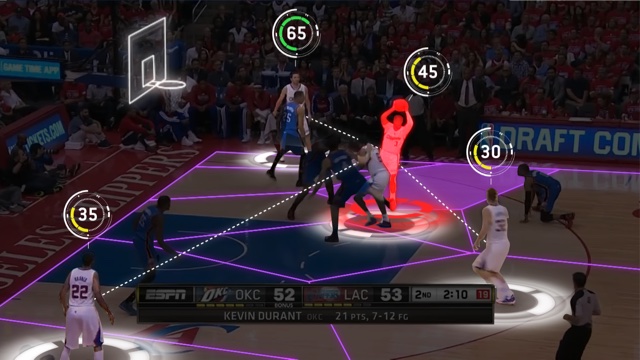We’ve
already talked about teams like the Philadelphia 76ers and the Boston Red Sox have
taken advantage of digital analytics to improve team performance, but now we’re
going to take a glimpse into the future of big data in professional sports.
Data can now be considered a vital aspect of almost every single professional
sports franchise and has taken over the sporting world by storm. As more and
more teams continue to use data and analytics to help them make better decisions
and win more games, the tactics and datasets used are only going to become more
accurate and precise leading to a renaissance of digital analytics in the modern
sports world.
One
promising field that is making advance in sports analytics is state of the art
object tracking systems. The NBA has already introduced object tracking into
the league. Multiple cameras track every movement on the court, both the ball
and players up to 25 times per second. Technology like this allows front
offices to gain masses of data every single game showing how far and where
players traveled over the course of the entire game. Although object tracking systems
have shown lots of promise in the NBA, data professionals have yet to gain much
insight from the technology.
Object
tracking systems are currently being studied in a similar manner to Network
Science, each player a node with a line between them and the ball as it travels
throughout the course of game. Though the technology is yet to result in any
return on investment for the league as it is studied, I believe that insights
will slowly be pulled from the masses of data. How do certain movement patterns
result in scoring? Winning/losing? Injuries? As time passes slowly teams will
gain tangible insights from the system and will be adapted into other
professional sports teams as well.
A
second promising data field that is making advances in professional sports is Genomics.
Genomics is a branch of molecular biology that studies the function, evolution,
mapping, and editing of genomes (a complete set of DNA). Genomics has already
made its way into hundreds of different fields and it is becoming especially
prominent in medicine and healthcare. Though it has not been involved in professional
sports analytics as of now, its integration shows great promise.
In
the near future it will likely be standards for athletes to have their DNA
samples studied. By understanding the makeup of one’s genes athletes will soon
be able to tell what adjustments that they need to make in their life to increase
their athletic potential. Genomics could soon tell what specific nutritional demands
their bodies need or how they should change their training to prevent injuries.
Its possible that young athletes could even receive insight into what sports
they should try based on their genetic makeup.
It is
clear that data and analytics is quickly becoming more and more important in
the world of professional sports. We can already see that teams are using to
make mid-game strategy shifts, to draft better players, and to avoid injuries.
But now as the study of data advances in professional sports it could soon give
us insight into things never even considered before. Though the timeframe is
unknown, digital analytics is soon to change the professional sporting world
forever.
Sources
Sources:
“A Brief Guide to
Genomics.” National Human Genome Research Institute (NHGRI), 27 Aug.
2015, www.genome.gov/18016863/a-brief-guide-to-genomics/.
“Technology Will Change the
Future of Professional Sports!” The Medical Futurist, 10 Dec. 2016,
medicalfuturist.com/technology-changes-the-future-of-professional-sports.
“What Is the Future of Big
Data Analytics and Sports?” Smith Hanley Associates, 21 June 2017,
www.smithhanley.com/2017/06/26/the-future-of-big-data-analytics-and-sports/.

Comments
Post a Comment